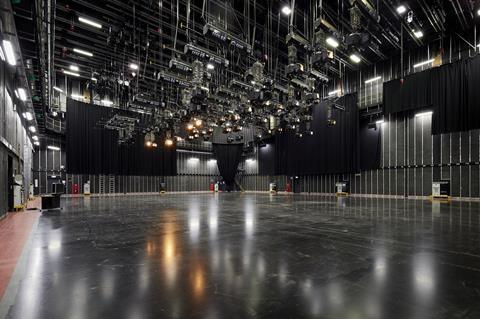In the lexicon of global business, few words have taken on as much urgency as resilience. The past two decades have tested supply chains, factories, and logistics networks in ways that even the most seasoned operators had not anticipated. Financial shocks, pandemics, geopolitical instability, climate disruption, and shifts in consumer demand have converged to remind leaders that durability in manufacturing is not optional—it is existential.
Resilient manufacturing is not about brute strength or simple risk avoidance. It is the art and science of designing operations that can bend without breaking, adapt without losing direction, and recover without sacrificing long-term goals. For organizations like Neyius, which operate across multiple continents and industries, the lessons learned in manufacturing resilience are not theoretical exercises—they are lived realities that inform how capital is deployed, how companies are built, and how stewardship is maintained across generations.
The question is no longer whether global manufacturing needs to be resilient. The question is what resilience looks like, how it can be measured, and what enduring lessons can be applied across industries. This article explores those questions by drawing from global case studies, operational data, and the lived experiences of enterprises navigating both disruption and opportunity.
The Context of Resilient Manufacturing
The Evolving Definition
Historically, manufacturing resilience was equated with redundancy—multiple plants, extra stockpiles, backup suppliers. While those tools still matter, they no longer suffice. The world has become too interconnected, margins too tight, and disruptions too unpredictable for redundancy alone to provide assurance.
Modern resilience encompasses flexibility, agility, and foresight. It is about embedding intelligence into every layer of operations: from data-driven forecasting to adaptive workforce models, from flexible production lines to supply partnerships that can shift under pressure without fracturing.
Why Global Lessons Are Essential
Resilience cannot be studied in isolation. A manufacturer in Bangladesh producing textiles operates under constraints that differ from a semiconductor plant in Taiwan or an automotive hub in Mexico. Yet, lessons converge: the importance of diversification, the role of technology, the necessity of governance, and the long-term horizon that distinguishes sustainable operators from fragile ones.
The Family Office Lens
From the perspective of a family office like Neyius, resilience is not a short-term risk management tactic. It is part of a broader philosophy of stewardship—ensuring that enterprises not only withstand shocks but also preserve and grow their relevance across generations. This approach prioritizes durability, cultural alignment, and strategic patience over fleeting gains.
“The measure of a leader is not in the authority they hold, but in the trust they earn and the opportunities they create for others to rise.”
Alexsei Vanovich

Global Lessons from Manufacturing Hubs
Lesson 1: Asia’s Dual Role—Scale and Fragility
Asian manufacturing hubs have taught the world the power of scale. China’s rise as “the factory of the world” remains unmatched in scope, while hubs like Vietnam, Bangladesh, and India have demonstrated the cost advantages of concentrated, specialized production.
But these hubs also reveal fragility. When COVID-19 closed ports in Shenzhen, the ripple effects were global. When energy crises struck Bangladesh, entire sectors slowed. The lesson: concentration is efficient until it isn’t. Resilient strategies now blend the benefits of Asian scale with geographic diversification and nearshoring initiatives in places like Mexico, Eastern Europe, and North Africa.
Lesson 2: Europe’s Heritage and Flexibility
Europe’s manufacturing landscape reflects centuries of craft, heritage, and institutional memory. Germany’s Mittelstand companies, Italy’s textile houses, and Switzerland’s precision engineering firms highlight the value of specialization and quality.
The European lesson lies in flexibility: these companies often survive through multiple wars, economic shifts, and technological revolutions because they evolve without abandoning their identity. Their resilience stems from governance structures, apprenticeship systems, and a cultural dedication to quality over volume.
Lesson 3: North America’s Integration of Technology
In the United States and Canada, manufacturing resilience has been reshaped by automation, data intelligence, and advanced robotics. While cost competitiveness has often lagged Asia, North America’s edge is its capacity to integrate technology at scale.
Resilient models here are data-rich, predictive, and less dependent on low-cost labor. The role of digital twins, AI-enhanced forecasting, and smart factories provides lessons in how intelligence itself becomes a resilience tool.
Lesson 4: Emerging Hubs in Africa and Latin America
The future of resilience also lies in diversification to emerging hubs. Ethiopia, Kenya, and Nigeria have shown potential in textiles and light manufacturing, while Brazil and Mexico continue to expand as alternatives to Asian supply chains.
The lesson here is that resilience is not static—it shifts with demographics, politics, and development. Operators must not only learn from current hubs but also anticipate where future hubs will emerge.
The Role of Data Intelligence
No conversation about resilience is complete without addressing the role of data. Forecasting demand, mapping supply risks, and tracking operational performance all depend on intelligence systems that can process complexity at speed.
Data is the connective tissue of resilience. It allows operators to see beyond borders, anticipate disruptions, and allocate resources with precision. But data is not enough—what matters is interpretation, governance, and integration into real-world decision-making.
Adaptive Capacity as a Strategic Imperative
Adaptive capacity refers to an organization’s ability to change course under stress without losing coherence. In manufacturing, this means modular factories, multipurpose equipment, flexible labor contracts, and supplier networks that are collaborative rather than transactional.
Adaptive capacity transforms resilience from a static concept into a dynamic one. It is not about preparing for one specific crisis but about building systems that can adapt to many possible futures.
The Family Office Perspective
From Neyius’ perspective, resilience anchored in data and adaptive capacity reflects a deeper principle of stewardship. Just as families preserve wealth across generations through diversification, governance, and discipline, manufacturers preserve relevance through foresight, intelligence, and operational flexibility.
Sustainability as a Core Pillar
Sustainability has moved beyond corporate buzzword status to become a cornerstone of resilience. Manufacturers who ignore environmental realities face risks not just from regulators but from markets, consumers, and communities.
Resilience and sustainability converge in practices that lower emissions, conserve resources, and support ethical labor. The future of manufacturing resilience will be inseparable from environmental stewardship.
The Rise of Regionalism
Globalization remains powerful, but resilience is driving a shift toward regionalism—nearshoring production closer to consumers, creating shorter and more controllable supply chains. This trend will not eliminate globalization but will reshape its contours.
Technology as a Shield and a Sword
Automation, AI, and advanced analytics will continue to redefine resilience. But they are not panaceas—they require governance, integration, and a human-centered approach. The resilient factory of the future will be as much about people as it is about machines.
Governance and Stewardship
Finally, resilience depends on governance—clear decision rights, accountability structures, and cultural alignment. Family offices like Neyius emphasize governance because it ensures that operational resilience is not ad hoc but institutionalized.
Timeless Principles of Operational Durability
Resilient manufacturing is not a trend. It is a timeless principle of survival and prosperity in a complex world. The lessons learned from global operations—diversification, data intelligence, adaptive capacity, sustainability, and governance—are not only relevant for factories. They are relevant for any enterprise that seeks to endure.
For Neyius, resilience is not a project or a slogan. It is an extension of stewardship—the disciplined, long-term approach that ensures that companies, communities, and legacies thrive across generations.
In the end, resilience is less about predicting the future than about preparing for its uncertainty. It is about building organizations that can navigate storms without losing sight of the horizon, bend without breaking, and recover not just to where they were but to where they are meant to be.




3 Comments
Ashton Porter
Sed eleifend ultricies risus, vel rutrum erat commodo ut. Praesent finibus congue euismod. Nullam scelerisque massa vel augue placerat, a tempor sem egestas. Curabitur placerat finibus lacus.
Ashton Porter
Praesent finibus congue euismod. Nullam scelerisque massa vel augue placerat, a tempor sem egestas. Curabitur placerat finibus lacus.
Ashton Porter
Ut enim ad minim veniam, quis nostrud exercitation ullamco laboris nisi ut aliquip ex ea commodo consequat. Duis aute irure dolor in reprehenderit.